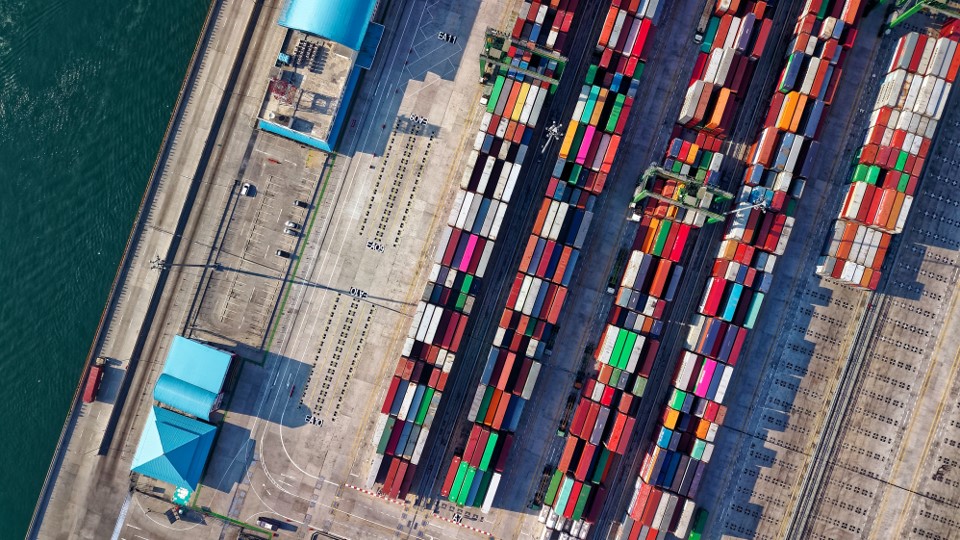Current supply chain scenario has moved from a state where disruptions were considered the trend and focus was made even at top-management level, to a lowered disruptive situation in which investments will still be needed to shape organizations’ competitive advantage by developing the supply chain of the future; through a strategical transformation based on commercial innovation, sustainable operations, real-time decision execution and human-centric work design.
Meeting customers expectations and deliver enablement can improve revenues. Therefore, customers should be given service-oriented supply chain capabilities, focus on service and not operational performance itself. Clear and transparent services should be put in place to add modularity and flexibility.
The agenda is set up to address sustainability concerns and commitment should be proven. The green value proposition should be used to grow revenue and achieve quantifiable direct cost savings. Building partnerships, establishing a sustainability roadmap and building upon known successful use cases can be of help. Additionally, real-time decision execution is undermined by the real unavailability of data and technological constraints. Developing access to real-time data should be the first step towards analysis capabilities and technological facilitators that enable real-time decisions execution.
Furthermore, considerations among improving the employee experience and its value proposition will undoubtedly tackle the human capital shortage and retain it, critical issues that companies are facing.
“Chief Supply Chain Officers (CSCOs) can impact strategic outcomes by shifting their focus from operational excellence to commercial innovation.”
The main inputs and contributions are:
- The supply chain of the future can deliver competitive advantages to organizations and their customers. Although, disruptions pressures have been lowered, the topic is still considered strategical for business and investments in improvements should continue over the next 3 to 5 years.
- Nowadays, enablement stands as a new profitable source of income, since customers being delivered with it are twice as likely to repeat. Nevertheless, deploying it is not exempt of difficulties from usual business. Social and legislation concerns towards sustainability put additional pressure to deliver decarbonization. Moreover, real-time execution is subverted by the lack of data and legacy technology. And finally, human capital is impacting the organizations due to the lack of capabilities and a competitive scenario between companies.
- 38% of boards of directors flag business expansion/diversification as a top priority for 2023, versus 17% in 2022.
- 75% of supply chain leaders believe engaging in circular economy activities is important, but only 1 in 5 use such principles. Additionally, even though 85% of supply chain leaders focus on emissions tracking, just 1 of 3 suppliers are committed to prioritize the topic due to cost pressures.
- 95% of supply chains must quickly react to changing conditions, but only 7% are able to execute decisions in real time.
- This real-time operational model is expected to increase more than fivefold in the next 3-5 years.
- Chief Supply Chain Officers (CSCOs) say retaining talent is the top challenge to human-centric work design over the next 3-5 years.
- The future supply chain will be based on commercial innovation, driven by “as a service” capabilities to customers and a strong focus on service; will have embedded sustainability across its value chain; will make real-time decisions at the speed that makes sense for each process, even with automated execution; and lastly, innovation will bring improved flexibility and employee value proposition to develop a human-centric work design.
- Therefore, the path forward will be supported by a clear and transparent and customer-centric service offer, where service comes before operational performance; an established sustainability roadmap build upon already identified benefits, use cases, strategic partnerships and a strong risk governance; a move forward beyond real-time analytics to obtain real-time decision-making and execution by means of analysis capabilities, technologies such as digital twins, AI or task mining, and proven uses cases that can demonstrate value; and finally, by delivering value to the employees with an attractive value proposition for their workplace and careers’ development.
“High-performing supply chains are significantly more likely (19% on average) to have capabilities in place toachieve their sustainability goals.”




Leave a Reply